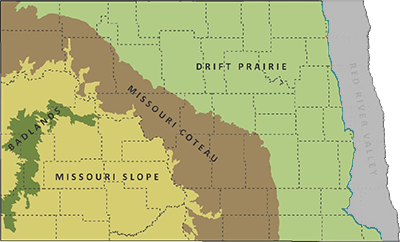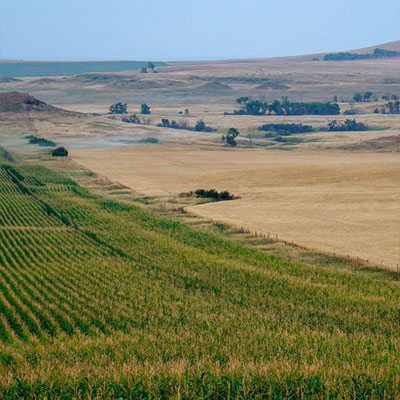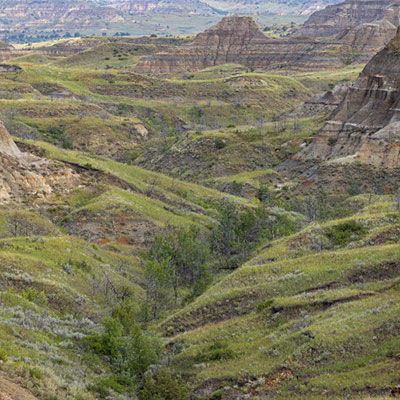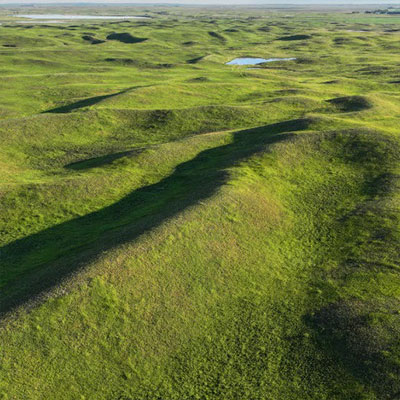Western Meadowlark

NDGF
L 9.5”, WS 14.5”, 3.4 oz. Medium-sized songbird, bright yellow belly and underparts with distinctive black “V”.
Status in North Dakota
Occurs in North Dakota primarily from March to early November. Rare in other months. Peak breeding season mid-April to late July.
Reason for SWAP Designation
Declining, ND range important (SGCN b.).
ND ranks 6th out of 22 states for highest percent of the global population (7.3%) during the breeding season (eBird).
The Western Meadowlark is declining, and the population has decreased 42% since 1970.
ND has high stewardship responsibility for this species.
Threats
Loss of grassland.
Degradation of grasslands from invasive plants, woody encroachment, succession, and loss of diversity.
Loss of ranching heritage and grass-based operations, grazing is essential to grassland health and diversity.
Loss of perches in grassland habitat may inhibit use of those areas (e.g.
fencing, rocks).
Increasing applications of agrochemicals and possible exposure causing pesticide acute toxicity.
Direct and indirect impacts from energy development, Western Meadowlarks exhibit displacement from areas within and surrounding wind turbines.
Research and Monitoring
Habitat requirements and demographic studies have been broadly researched on the breeding grounds.
Post-fledgling survival, breeding site fidelity, nest success and adult survival is needed for Western Meadowlark.
Additional information is needed on migration and wintering behaviors.
The Breeding Bird Survey, eBird and Partners in Flight Databases are key sources of information on distribution and population trends.
Management Recommendations
- Protect and conserve intact tracks of native prairie/unbroken grassland.
- Reconstruct or restore grassland adjacent to existing tracts of native prairie/unbroken grassland.
- Use native grasses when replanting or restoring grassland.
- Promote well-managed grazing lands and working grasslands for biodiversity, sustainability, and resiliency.
- Graze or hay expired CRP. The density of Western Meadowlarks is 61% lower in CRP fields converted to cropland, but density will increase if expired CRP is converted to grazed grassland (+26%) or hayland (+22%).
- Prevent or remove tall woody vegetation in grasslands, either mechanically or by prescribed fire.
- Provide display perches such as wooden fence posts and replace rocks in restored/tame grasslands.
- Delay mowing or haying until August 1.
- Conscientious and appropriate application of agrochemicals.
- Follow beneficial or best practices during the design, siting, construction, operation, and maintenance of tall structures (e.g. transmission lines, communication towers, wind turbines).





